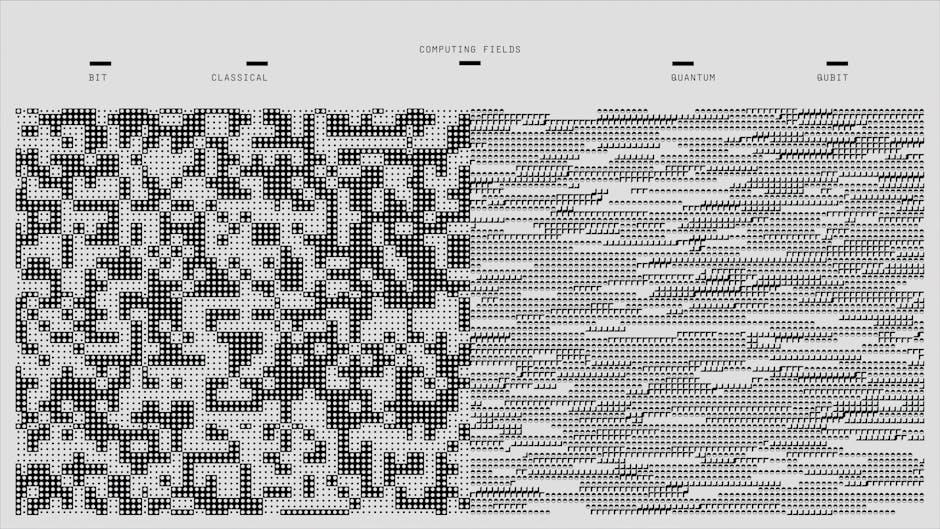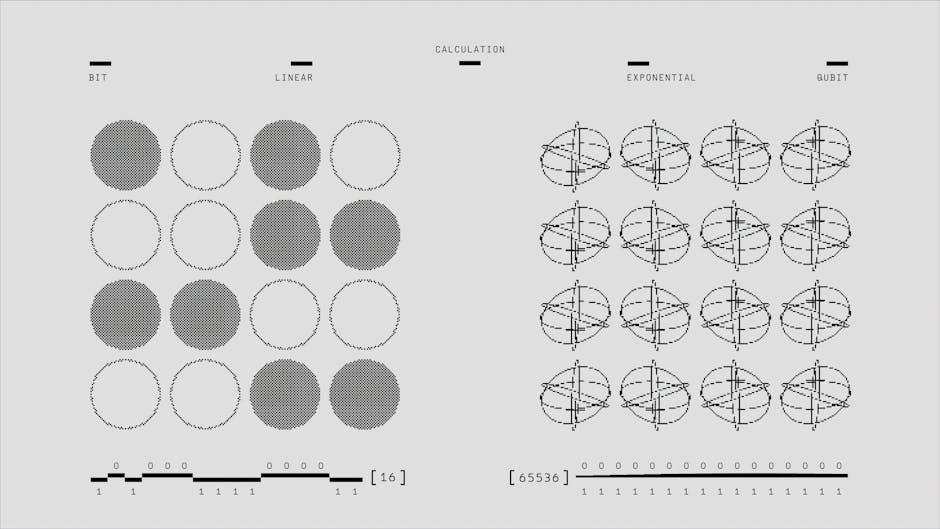In a world swiftly propelled by technological breakthroughs, few frontiers shine as brightly—and mystify as deeply—as quantum computing. Promising to revolutionize industries from cryptography to medicine, this enigmatic realm blends the strange laws of quantum mechanics with the ambition of human ingenuity. Yet, for many, the language of qubits, superposition, and entanglement remains an inscrutable cipher. This article seeks to decode the essence of quantum computing, peeling back layers of complexity to offer a clear, balanced guide. Join us as we explore the fundamentals, potential, and challenges of this extraordinary technology set to shape the future.
Table of Contents
- Understanding the Core Principles of Quantum Computing
- Exploring Real-World Applications and Industry Impact
- Challenges in Quantum Development and Strategies for Progress
- Preparing for a Quantum Future Through Education and Investment
- Insights and Conclusions

Understanding the Core Principles of Quantum Computing
At the heart of this transformative technology lie several fundamental concepts that distinguish quantum computing from classical computing. Unlike traditional bits, which encode information as either 0 or 1, quantum bits, or qubits, can exist in multiple states simultaneously thanks to a property called superposition. This unique feature exponentially expands the solution space for complex computations, enabling tasks that are currently impossible for classical machines. Alongside superposition is entanglement, a phenomenon where qubits become interconnected so that the state of one instantly influences the state of another, no matter the distance separating them. This deep interconnectedness allows quantum algorithms to tackle problems with vastly improved efficiency.
To better understand these principles, consider how quantum operations manipulate qubits through gates that differ fundamentally from classical logic gates. Below is a concise comparison highlighting key distinctions:
| Feature | Classical Computing | Quantum Computing |
|---|---|---|
| Basic Unit | Bit (0 or 1) | Qubit (superposition of 0 & 1) |
| State Representation | Definite | Probabilistic |
| Computational Power | Linear scaling | Exponential scaling |
| Correlation | Independent bits | Entanglement |
- Superposition allows simultaneous exploration of multiple possibilities.
- Entanglement enables instantaneous correlation between qubits.
- Quantum interference harnesses probability amplitudes to amplify correct answers.

Exploring Real-World Applications and Industry Impact
Quantum computing is not just a theoretical marvel; its potential to revolutionize industries is already capturing the imagination of businesses worldwide. From pharmaceutical companies accelerating drug discovery to financial institutions optimizing risk models, the transformative power of quantum machines lies in their ability to solve problems at unprecedented speeds. For example, quantum algorithms enable simulations of molecular structures that are too complex for classical computers, potentially shortening the timeline for creating new medications. Additionally, sectors like logistics and supply chain management stand to benefit from quantum-enhanced optimization, resulting in cost reductions and improved efficiency.
- Healthcare: Accelerating personalized medicine and genomics analysis.
- Finance: Enhancing portfolio optimization and fraud detection.
- Energy: Improving materials for battery technology and renewable energy.
| Industry | Current Challenge | Quantum Solution |
|---|---|---|
| Pharmaceuticals | Long drug development cycles | Simulations to speed up trials |
| Finance | Complex risk modeling | Enhanced algorithmic solutions |
| Manufacturing | Supply chain inefficiencies | Optimized logistics planning |
As quantum technology matures, we anticipate a surge in industry collaborations, fueling innovation pipelines and new business models. Governments and private sectors are investing heavily to create quantum-safe cryptography protocols that safeguard data in an era poised for quantum attacks. Furthermore, quantum computing’s integration with other cutting-edge technologies such as artificial intelligence promises compounded advancements, enabling smarter, faster decision-making across diverse ecosystems. This evolving synergy heralds a future where quantum is not just an advanced computing paradigm but a foundational pillar of technological progress.

Challenges in Quantum Development and Strategies for Progress
Quantum computing is navigating through a landscape riddled with complex obstacles that demand innovative approaches. Among the most pressing issues are error rates in qubit operations and the difficulties in maintaining qubit coherence over extended periods. The fragile nature of quantum states means that even the slightest environmental interference can cause computational errors. Additionally, scaling quantum systems from dozens to hundreds or thousands of qubits remains a significant engineering hurdle, as current architectures struggle with control and connectivity complexity. To confront these challenges, researchers are pioneering robust quantum error correction codes and experimenting with diverse qubit platforms, from superconducting circuits to trapped ions, each offering unique advantages and trade-offs.
Strategic progress is also leveraging hybrid approaches where classical and quantum systems work synergistically, maximizing strengths on both ends. Industry and academia have identified key pathways for advancement, such as improving fabrication techniques and developing smarter algorithms that can tolerate noise better. Collaborative efforts emphasize open-source quantum software frameworks, fostering a community-driven pace of innovation. Below is a simplified overview of challenges and strategies driving this evolution:
| Challenge | Strategy for Progress |
|---|---|
| Qubit Error Rates | Implement advanced error correction – surface codes |
| Coherence Time Limitations | Develop new materials and isolation techniques |
| Scalability Constraints | Modular quantum architectures & interconnects |
| Complex Control Systems | Automation & AI-driven control protocols |

Preparing for a Quantum Future Through Education and Investment
To harness the transformative potential of quantum computing, a dual focus on education and strategic investment is essential. Educational institutions must redesign curricula to include quantum theory, quantum algorithms, and related technologies, ensuring that students are not only consumers of technology but creators of quantum innovations. Initiatives such as specialized degree programs, online courses, and hands-on workshops can empower a new generation of quantum-ready professionals. Additionally, interdisciplinary collaboration between physicists, computer scientists, and engineers can foster fresh perspectives crucial for making quantum computing fully accessible and practical.
On the investment front, public and private sectors should foster an ecosystem that supports quantum startups, research endeavors, and infrastructure development. Funding channels—ranging from venture capital to government grants—must be aligned with milestones in research and commercialization. The table below illustrates a simplified framework of how investment priorities could be structured to accelerate quantum progress:
| Investment Area | Focus | Impact |
|---|---|---|
| Quantum Hardware | Developing stable qubits and scalable machines | Enables real-world quantum applications |
| Software & Algorithms | Creating quantum-compatible software ecosystems | Bridges gap between theory and practice |
| Talent Development | Training and upskilling professionals | Builds human capital necessary for innovation |
| Collaborative Research | Supporting cross-sector partnerships | Propels breakthroughs through diversity |
- Empower diverse talent pipelines for widespread quantum literacy
- Foster environments where experimentation and risk-taking thrive
- Support policies that incentivize long-term investment and innovation
Insights and Conclusions
As we stand at the dawn of the quantum era, the complexities once shrouding this revolutionary technology are gradually unfolding into clarity. Decoding quantum computing is not just about understanding qubits and superposition; it’s about embracing a new way of seeing the universe’s hidden layers. While the quantum future still holds many mysteries, one thing is certain: the journey we’ve begun today will redefine the boundaries of possibility for generations to come. Whether you’re a curious novice or a seasoned technologist, the code to this quantum frontier is within reach—waiting to be cracked.



